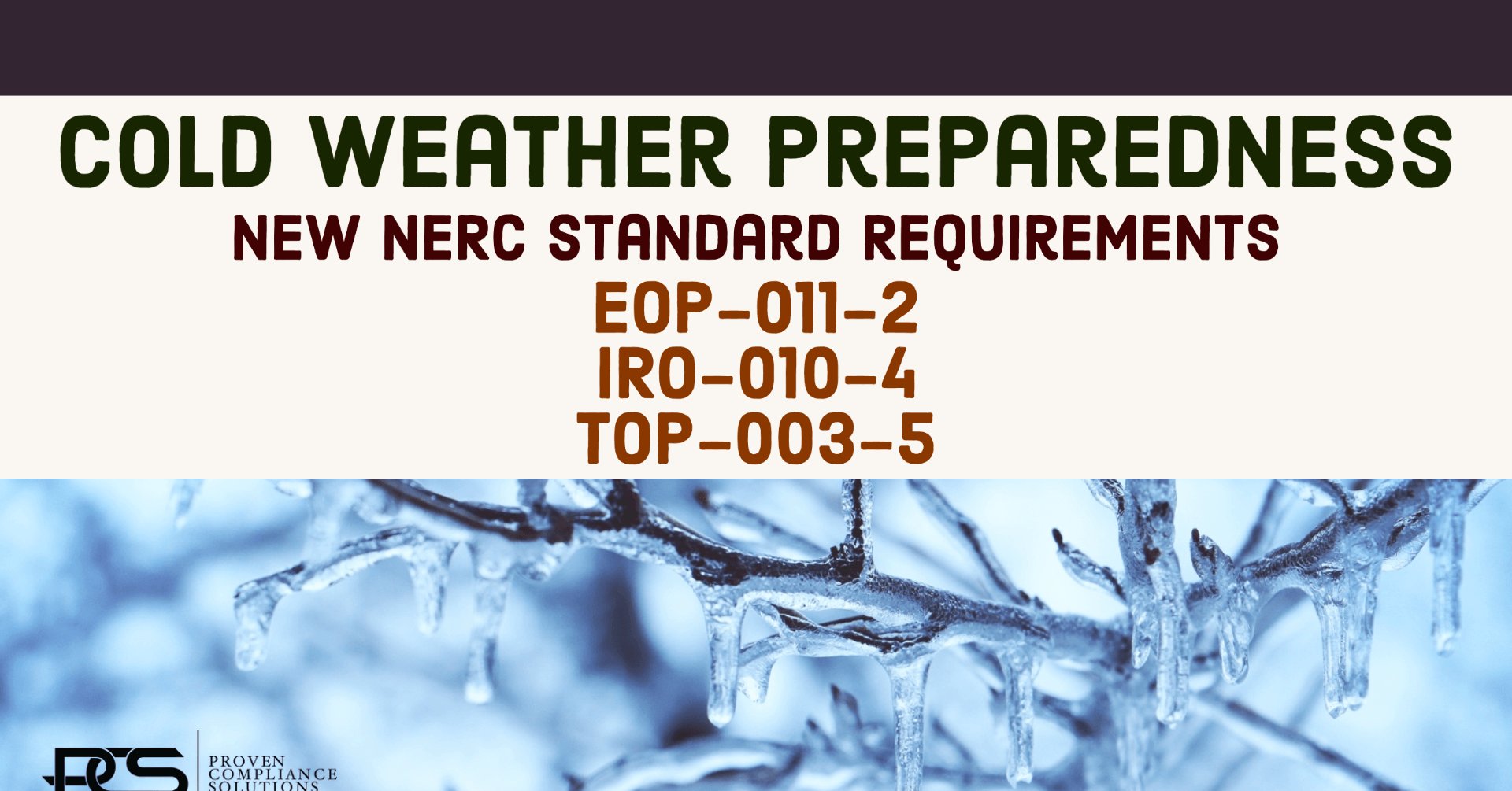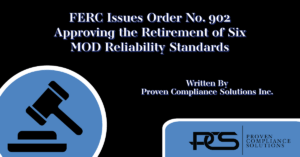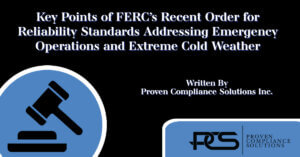New NERC Standard Requirements related to Cold Weather Preparedness have been approved, and the compliance impacts are significant.
How We Got Here
After the Southwest Freeze and Cold Weather event of February 2011, NERC and FERC discussed standards, but allowed the industry to improve their performance by following Cold Weather Prep Guidelines. However, after similar grid impacts during the Southeast Cold Weather Event of January 2018, NERC initiated Standards Development Project 2019-06 for Cold Weather Preparedness. The Cold Weather standards were approved by the industry and the NERC Board of Trustees, and filed for approval at FERC. On August 24, 2021, FERC issued an order approving three revised Reliability Standards associated with the project. With this approval, registered entities will have 18-months to implement the new and revised requirements. Specifically, the implementation date will be April 1, 2023.
Revised Standards and Who is Impacted
The modified Reliability Standards include EOP-011-2, IRO-010-4 and TOP-003-5, with new requirements applicable to the RC, BA, TOP, and GO functions. As noted above, the implementation plan only allows 18 months from the date of regulatory approval until all Cold Weather Preparedness plans must be developed and implemented, which is April 1, 2023. The time to begin development of the required plans is now, as most entities will have an overall plan, plus site specific plans. Implementation of some required activities can take several months.
What Must be Included in the New Requirements
A sampling of what will be required is as follows:
- RC, TOP and BA Operating Plans and communications will be required to address Cold Weather activities and capabilities.
- GO plans at a minimum must include:
- Freeze protection measures
- Annual inspection and maintenance of freeze protection measures
- Generating unit cold weather data including design operating temperatures, fuel supply, fuel switching, environmental constraints
- Cold Weather training
Cold Weather Prep plans and procedures will likely be much more detailed for specific generating sites. Detailed site plans will typically include items such as:
- Identification of all critical components subject to freezing
- Identification of locations for wind barriers and supplemental heating
- Testing and protection of freeze protection circuits
- Documentation of expected freeze protection circuit amperages
- Methods for detecting freeze protection failures
- Staffing during cold weather
- Site inventory of cold weather supplies
- Frequency of operator rounds during cold weather
- Frequency of freeze protection inspections during a cold weather event
- ETC
Resources and Assistance
NERC and the Regions are preparing to begin compliance engagements as soon as these standards are enforceable. Many resources have been posted. Examples include NERC’s Cold Weather Training Materials and SERC’s Cold Weather Preparedness. The Texas RE recently posted an updated Common Engagement Questions that included over 100 questions just on Cold Weather Preparations. These questions give entities some sense of how detailed and involved the requirements will be. Note that the questions are typical of what was asked during onsite Cold Weather Prep inspections in the ERCOT region (since the 2011 cold weather event).
PCS recommends entities start their compliance activities for the coming Cold Weather requirements now. For more information on how we can assist your organization with its NERC Reliability Standards compliance needs, contact Dale Zahn at (509) 504-5496. To learn more about Proven Compliance Solutions Inc., visit our website at www.provencompliance.com.





